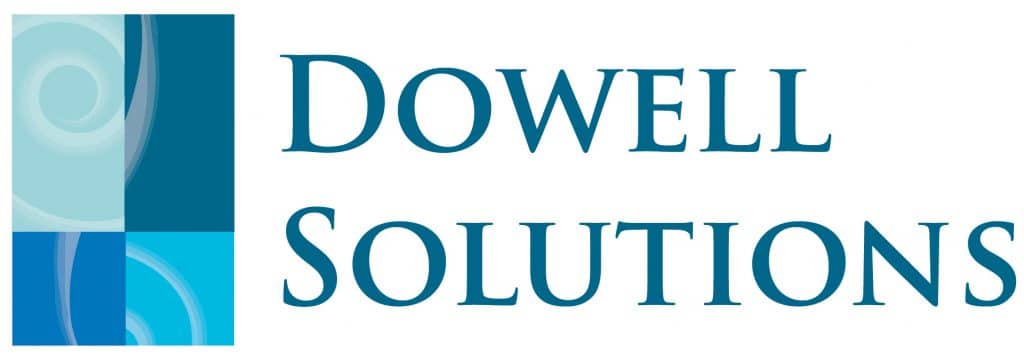Have you ever noticed small signs that something isn’t quite right with your team? Increased absenteeism, low morale, or a spike in complaints? These might seem like ‘just part of business,’ but they could be early warning signs of something much bigger: psychosocial hazards.
With over 25 years of experience in workplace health and safety (WHS), I’ve seen firsthand how unchecked psychosocial hazards can quietly erode team wellbeing. But I’ve also witnessed the power of early intervention.

When businesses spot these hazards early and take action, they protect their people and their bottom line.
In this blog, I’ll walk you through:
- How to spot psychosocial hazards early
- Practical steps to manage them
- Why it’s crucial to address them before they escalate
What Are Psychosocial Hazards?
Psychosocial hazards are aspects of the work environment or the way work is done that have the potential to harm mental health and wellbeing. These hazards go beyond physical dangers, they’re about the social and psychological environment we work in every day.
Common examples include:
- Work-related stress (tight deadlines, high-pressure roles)
- Poor support (lack of training, no access to help or guidance)
- Role confusion (unclear responsibilities or conflicting expectations)
- Bullying, harassment, and conflict (interpersonal issues left unresolved)
- Isolation or remote work challenges (disconnection from team and support systems) SafeWork Australia
These aren’t just ‘part of the job.’ They’re risks that, if ignored, can lead to burnout, mental health issues, and even legal consequences for the business. But here’s the good news: they’re preventable. SafeWork Australia Infographic
Why It's Important to Spot Psychosocial Hazards Early
Psychosocial hazards might not be as obvious as a loose electrical wire, but they’re just as dangerous and arguably more costly. Here’s why early intervention is essential:
1. Protects Employee Wellbeing
Unchecked psychosocial hazards can lead to anxiety, stress, burnout, and depression. By spotting the warning signs early, you can put support in place before these issues escalate. It’s a compassionate and proactive approach that shows employees they’re valued.
2. Reduces Absenteeism and Turnover
When employees feel unsupported or overwhelmed, they’re more likely to take sick leave or look for a new job. Addressing hazards early can reduce absenteeism and increase staff retention, saving your business the cost of recruitment and training.
3. Increases Productivity and Engagement
Teams that feel supported and clear on their roles are more productive and engaged. Removing psychosocial hazards creates a positive work environment where people want to do their best work.
4. Ensures Compliance with WHS Laws
Under WHS laws and the Model Code of Practice: Managing Psychosocial Hazards at Work, businesses are required to address these hazards. Failing to do so can result in audits, fines, and reputational damage. Proactively managing these hazards puts you ahead of compliance requirements.
Early Warning Signs of Psychosocial Hazards
So, what do these hazards actually look like in the workplace? Here’s what to watch for:
For Individual Employees:
- Increased absenteeism (regular sick days or frequent “mental health days”)
- Drop in performance (slower output, missed deadlines, or more mistakes)
- Changes in mood or behaviour (irritability, withdrawal, or disengagement)
- Physical symptoms (complaints about headaches, fatigue, or stress-related illnesses)
For Teams or Departments:
- Tension or conflict (disputes or unresolved disagreements within teams)
- Breakdown in communication (miscommunication, misunderstandings, or lack of collaboration)
- Increased complaints or grievances (more employee complaints to HR or leadership)
- Unexplained turnover (employees leaving without a clear reason or multiple resignations in a short period)
These signs are often dismissed as ‘business as usual,’ but if you’re noticing patterns, it’s a good idea to dig deeper.
Quick Win: 3-Minute Team Pulse Check
Sometimes, the simplest tools can make the biggest difference. Here’s a quick exercise you can implement immediately to gauge your team’s wellbeing:
Ask your team these three questions:
- On a scale of 1–10, how manageable is your workload right now?
- Do you feel supported by your manager and colleagues?
- Is there anything affecting your ability to do your job effectively?
Encourage honest responses and ensure there’s a safe space for open dialogue. This quick check-in can help identify issues before they escalate.
Practical Tips for Spotting Psychosocial Hazards Early
If you’re wondering, ‘How do I spot these hazards before they’re a problem?’ here are some practical tips to get you started:
1. Conduct a Psychosocial Risk Assessment
A psychosocial risk assessment will give you a clear view of which hazards exist in your workplace. This process identifies job demands, work practices, and areas where support is lacking. If you’re unsure where to start, I can help guide you through this process.
2. Encourage Open Conversations
Create a workplace culture where people feel safe to raise concerns. Managers should be trained to ask open-ended, supportive questions like:
“How are you feeling about your workload lately?”
“Is there anything getting in the way of you doing your best work?”
“Is there something I can support you with right now?”
Normalising these kinds of conversations can uncover hidden issues early and help people feel genuinely seen and supported.
3. Use Anonymous Staff Surveys
Surveys allow people to speak freely without fear of judgment. Use short, simple surveys with questions about workload, clarity, stress levels, and how supported they feel. Tools like Microsoft Forms or Google Forms are free, easy to use and they can uncover valuable insights you might otherwise miss.
4. Track Absenteeism and Turnover Trends
Patterns in sick leave, resignations, or complaints often signal that something’s going on beneath the surface. Don’t brush them off, use them as prompts to check in and investigate.
5. Observe Behavioural Changes
Encourage supervisors and managers to notice shifts in tone, pace, mood or engagement. One quiet employee pulling back from the team might not be alarming, but if it’s happening across multiple people or teams, it’s time to ask why.
How to Control Psychosocial Hazards
Identifying psychosocial hazards is only the first step, what matters most is what you do next. Here are some proven, practical strategies to reduce risks and create a mentally healthy workplace:
1. Clarify Roles and Responsibilities
Unclear expectations create confusion and stress. Update job descriptions, communicate clearly, and check in regularly to ensure each team member understands what’s expected of them.
2. Manage Workloads and Deadlines
Excessive workloads and unrealistic deadlines are major triggers for stress. Help your team by balancing workloads, allowing flexibility when needed, and planning ahead to avoid constant firefighting.
3. Improve Access to Support
Make it easy for employees to get help when they need it, whether that’s access to HR, mental health resources, an EAP, or regular one-on-one check-ins. Sometimes, just knowing support is available makes a big difference.
4. Address Conflict Early
Don’t let small disagreements fester into bigger issues. Provide conflict resolution training, set expectations for respectful communication, and ensure there’s a clear path for raising concerns safely.
5. Foster Respect and Inclusion
Workplaces that actively promote respect and inclusion experience lower stress and higher engagement. Reinforce a zero-tolerance approach to bullying and harassment, and encourage all team members to treat each other with professionalism and care.
Final Thoughts
Psychosocial hazards might not be visible, but their impact is real and if ignored, they can quietly erode your team’s health, culture, and productivity.
By spotting the signs early and taking practical steps to address them, you’re actively creating a workplace where people feel safe, supported, and able to thrive.

ABOUT THE Author - Kylie Dowell
Kylie Dowell is a seasoned WHS consultant, trainer, and safety advocate with over 25 years of experience helping Australian businesses create safer, compliant workplaces.
Through her partnership with TEAMS, an accredited Registered Training Organisation, Kylie delivers a wide range of training up to Advanced Diploma level, empowering businesses with the knowledge and skills to manage safety effectively.
As an approved trainer for Health and Safety Representative (HSR) courses by three Safety Regulators, Kylie has guided countless organisations in building stronger safety cultures and fostering healthier work environments.
Specialising in practical and effective safety solutions, she works closely with small and medium-sized businesses to simplify complex WHS requirements, making safety approachable and achievable.
When she’s not delivering high-quality training or conducting ISO 45001-certified audits, Kylie enjoys collaborating with her clients to design tailored workshops and strategies that suit their unique needs.
Ready to make safety simpler? Get in touch with Kylie today for personalised support.
